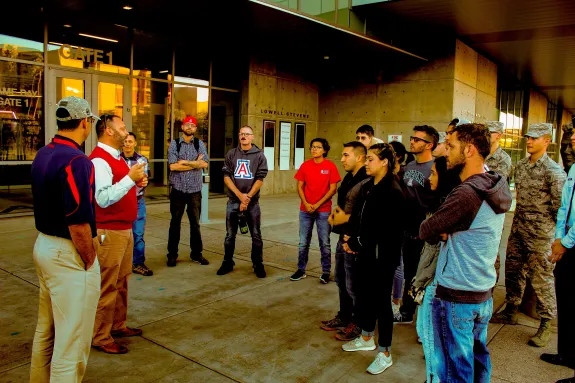
Program History
After surveying its student veterans in 2007, The University of Arizona used direct feedback to establish VETS in August 2008. VETS crosses campus and community boundaries to create a comprehensive, integrated program for student veterans which uses student feedback to drive its development. Since its inception, VETS has been recognized as one of the finest programs for student veterans in the country.
The VETS Center was originally located in Old Main. Though this space was generously donated, it quickly became apparent that the program would require more space. Within the first few weeks of opening, the Center saw around 5-10 visitors per week. Once word got out, the Center’s numbers drastically increased to upwards of 100 visitors a day. In August 2009, the Center moved into its permanent home in the Student Union Memorial Center. The SUMC serves as the perfect backdrop for the center given that it is located in the center of campus, houses a multitude of leadership and engagement opportunities for students, and also because the building itself was created to honor the significant contributions the military has made to campus and to history.
In April 2014, VETS proudly opened a new center at the University of Arizona Health Sciences. The UAHS VETS Center is the first resource center in the nation created specifically to accommodate student veterans pursuing degrees in the health-related sciences. The UAHS VETS center aims to provide immediate access to resources and foster student engagement among military veterans pursuing health-science degrees. It is now home to the MedVets Club, which focuses on helping their fellow veterans transition into the civilian healthcare field.
As you can see, VETS incorporates academics, institutional access, student involvement and research. VETS believes that in order to support the success of our enrolled student veterans we must constantly strive to understand their experience authentically and that this will ensure the program remains both innovative and effective.

